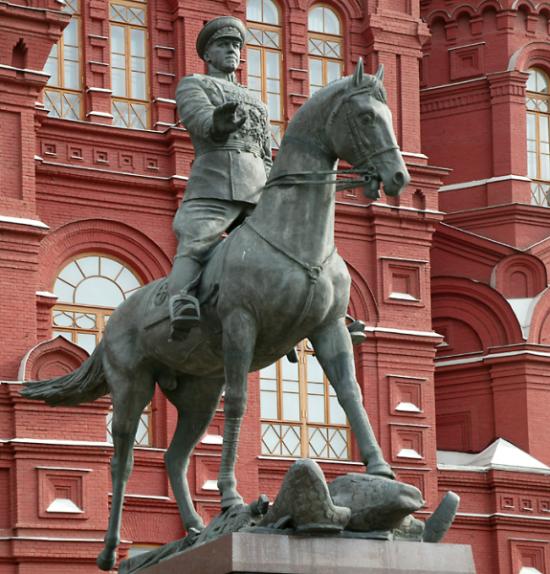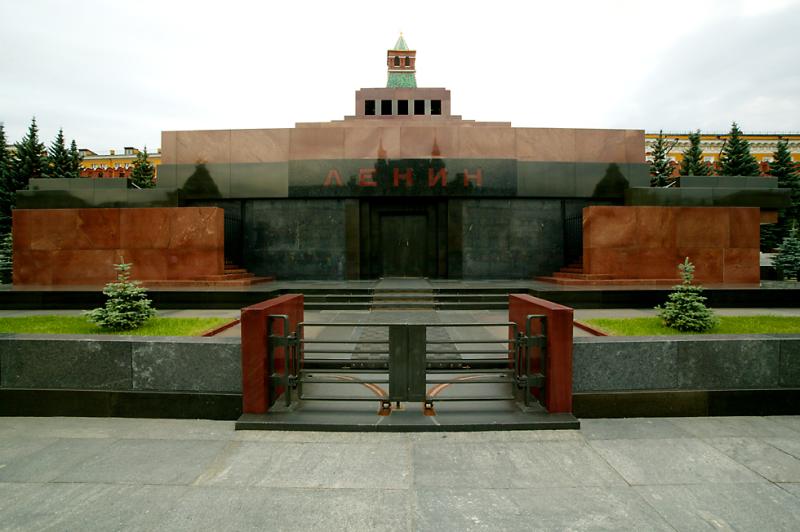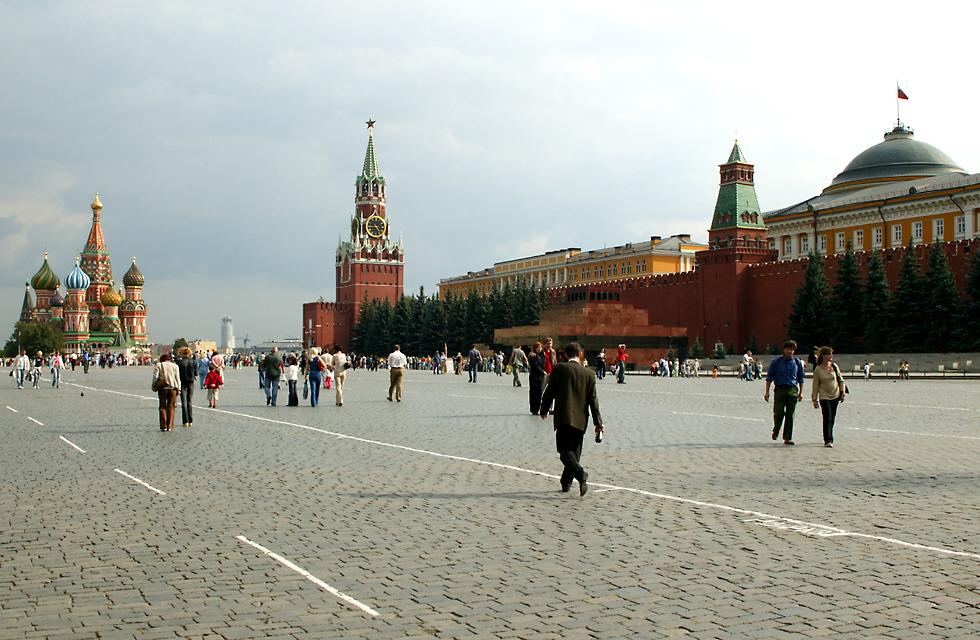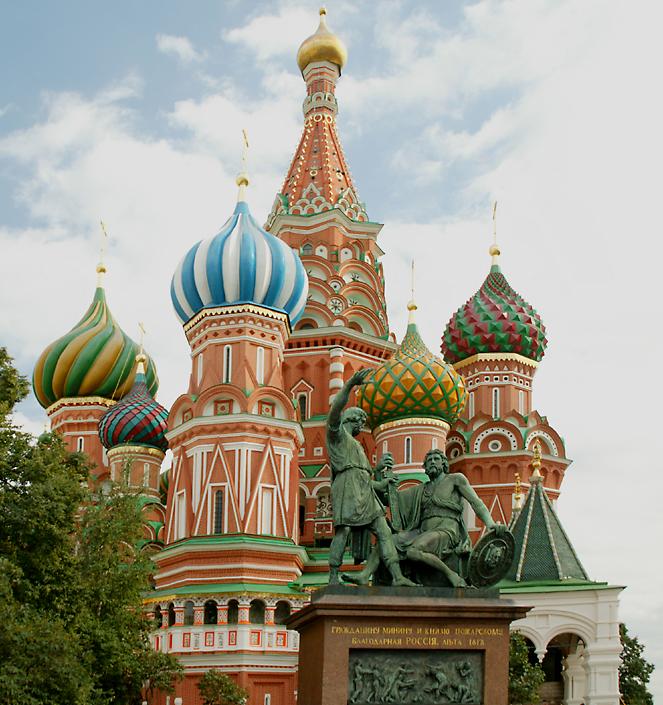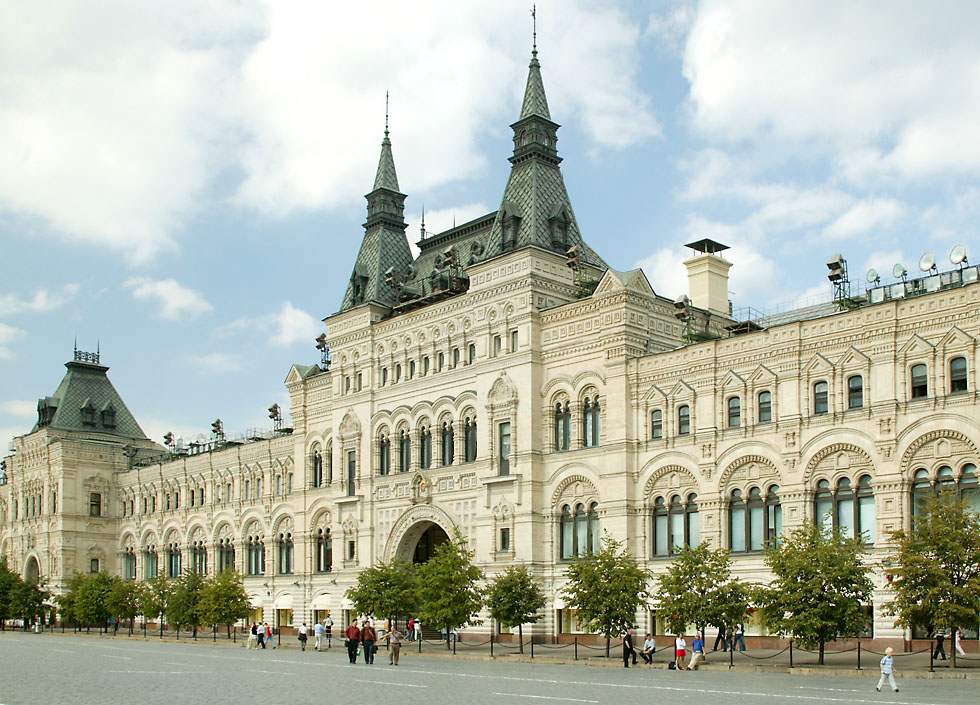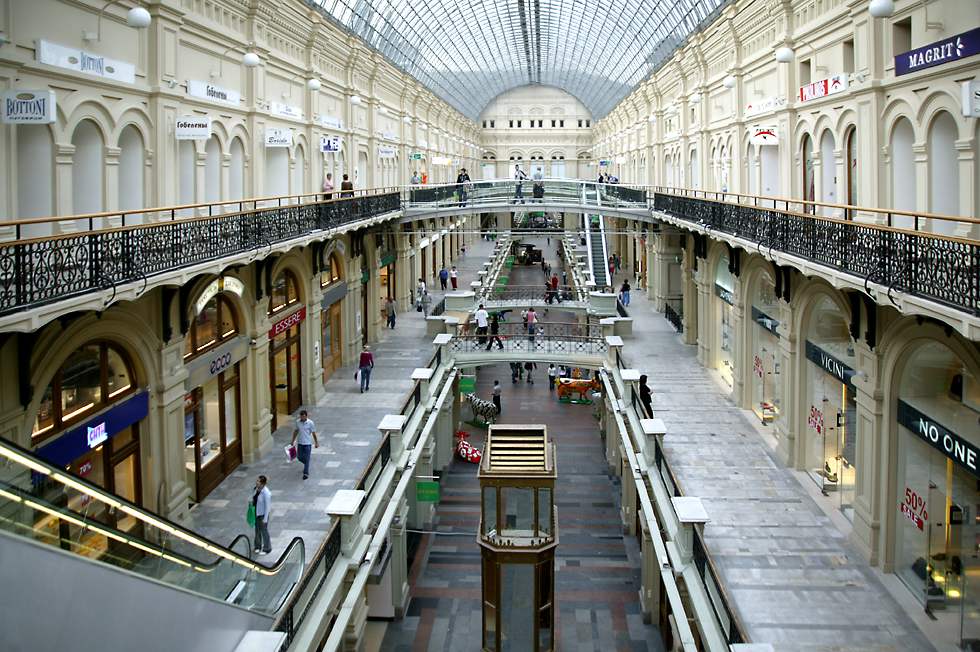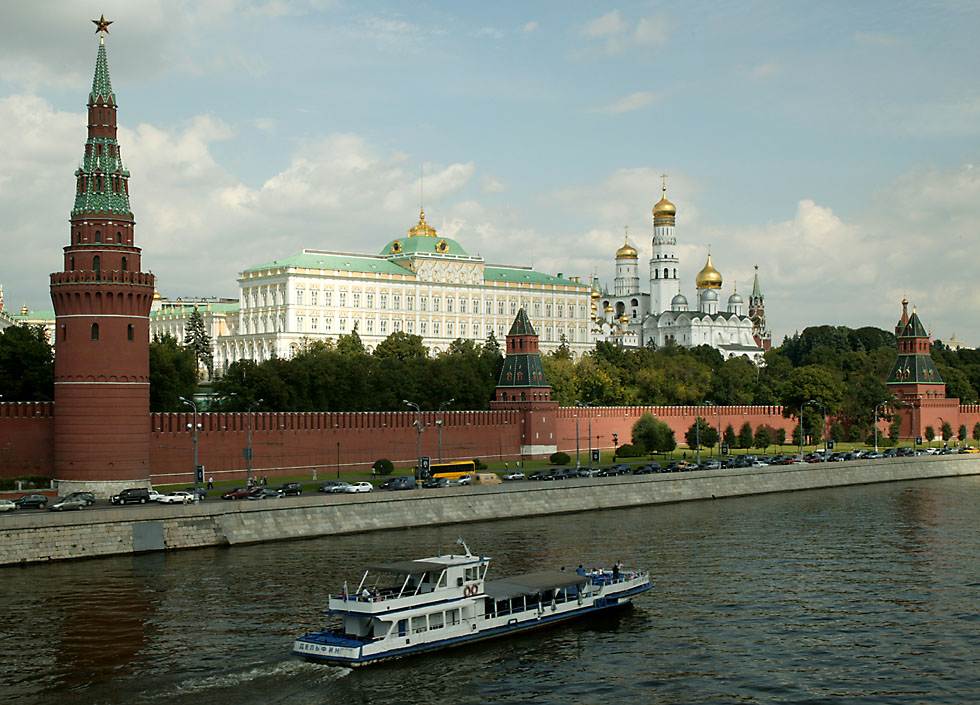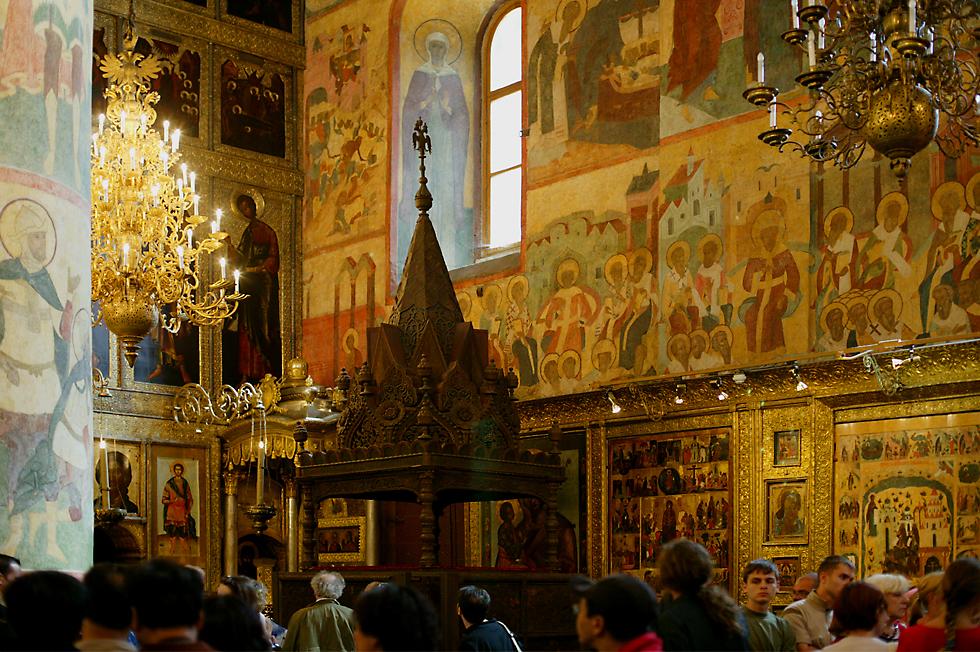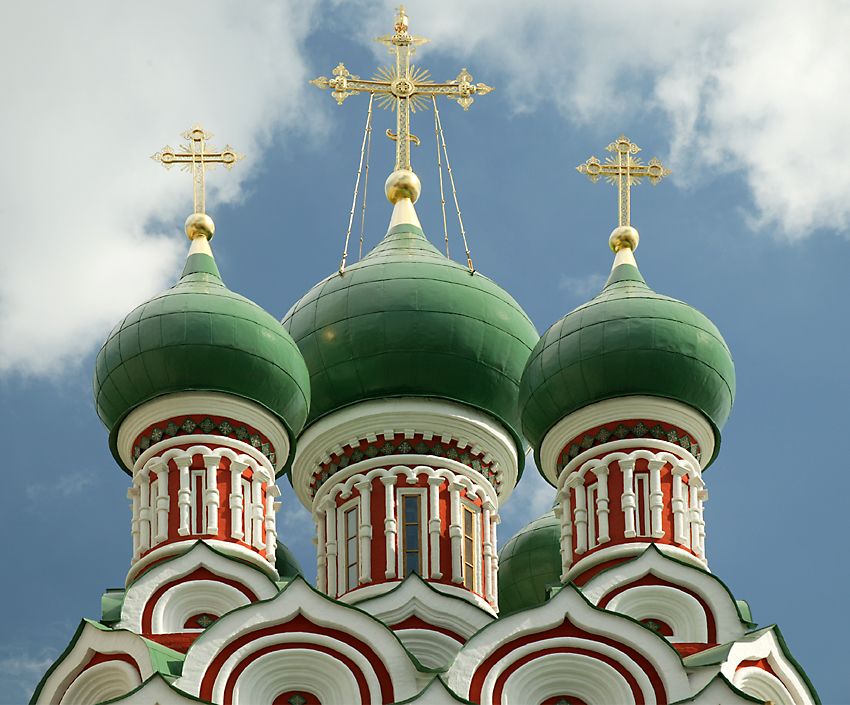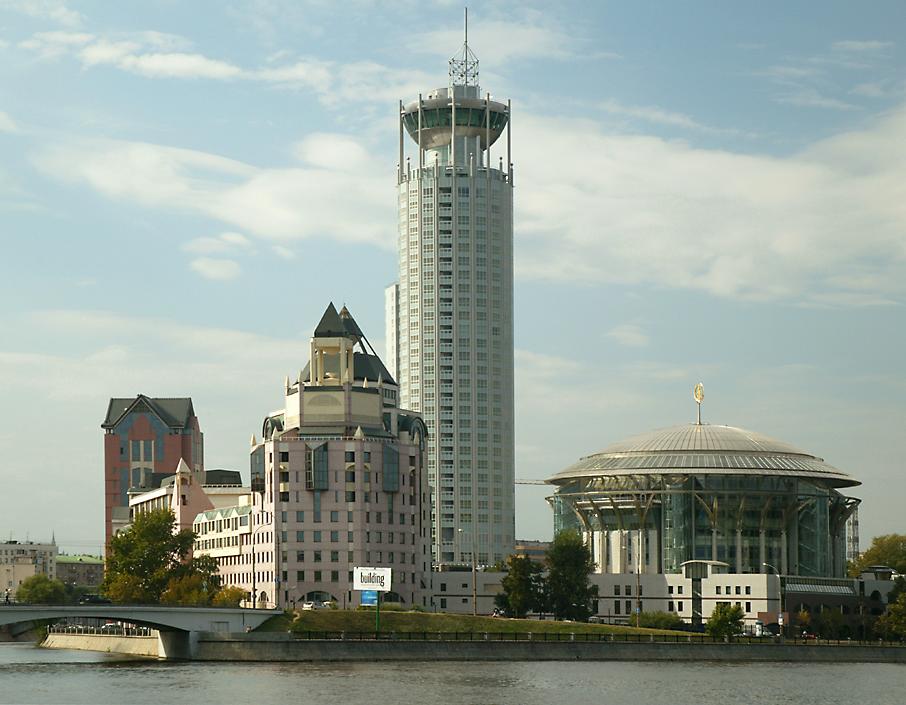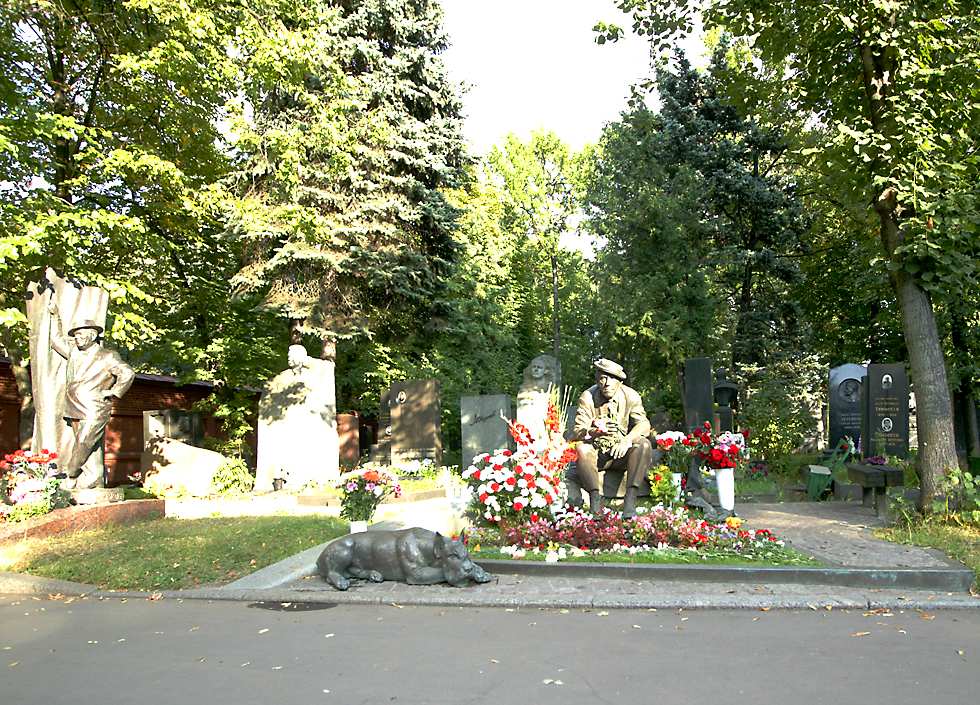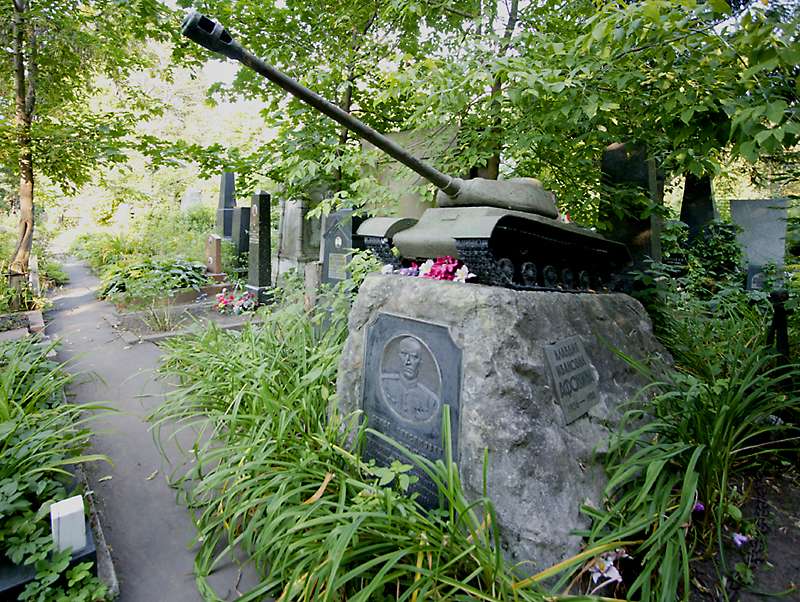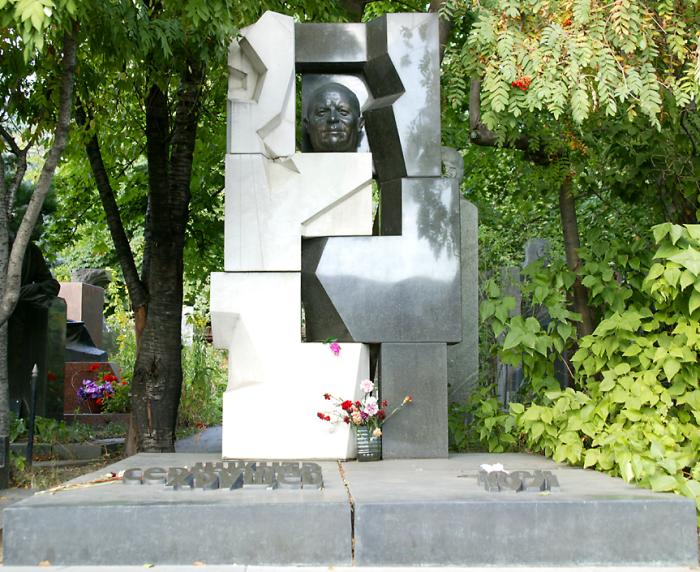Highlights of Moscow

The Resurrection Gate is the northern entrance to Red Square, just a few hundred meters from the statue to Zhukov. There's a small orthodox chapel that you can see on the right of this photo, people selling tourist knick-knacks, and street performers with eagles and other circus type attractions. Through the gate you can see the domes of St Basil's cathedral at the opposite end of Red Square. It's all a great drawcard both for foreign tourists and local families. |
|
In 1991 Red Square was added to the UNESCO list of world heritage sites, and it really acts as the focal point of Moscow and therefore the whole of Russia. This is a view of the north end of the square - unlike Times Square in New York, this really is a square (OK, it's actually a bent rectangle, but you know what I mean). The lack of people in this photo is very uncharacteristic, I'm not quite sure how I managed it or even whether it's a good thing. From left to right in this photo you can see the domed Senate Building behind the high walls of the kremlin, with the Senate Tower built into the wall directly behind the tomb of Lenin. The next structure to the right is the St Nicholas Tower, with the Corner Arsenal Tower to its right, marking the far northern corner of the more-or-less triangular kremlin. Again we have the State History Museum on the right hand side of the photo, with the Resurrection Gate next to it. |
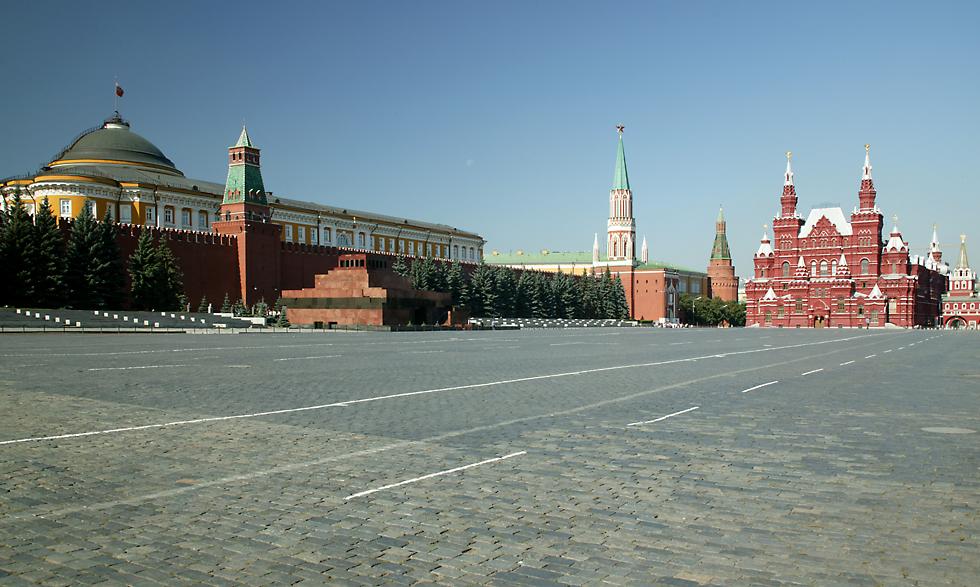 |
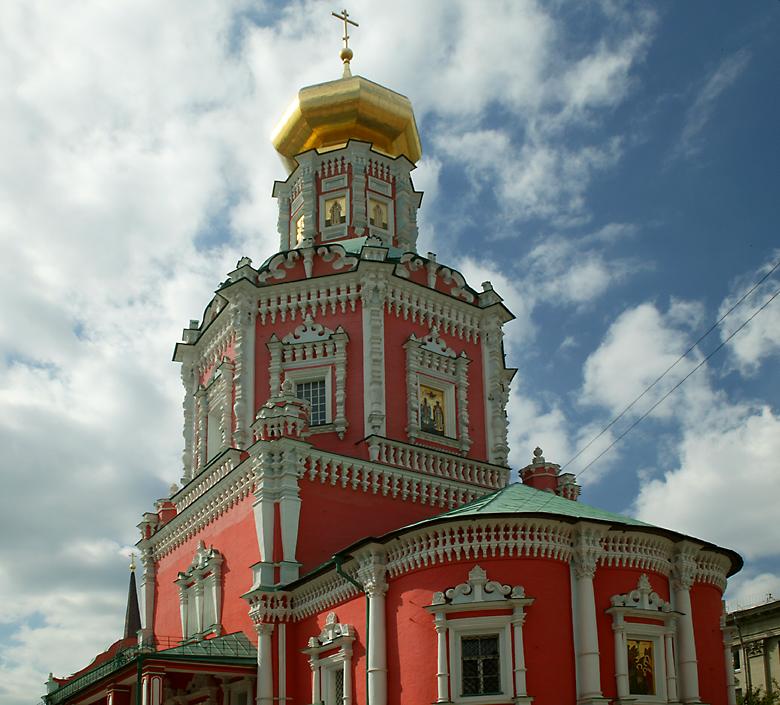
The Monastery of the Epiphany is in the same district, its Epiphany Cathedral was also built in Russian baroque style, in the 1690s. It seems surprising that the communists allowed so many cathedrals and churches to remain standing. Apparently Stalin was somewhat superstitious, even ordering a special service in one of the Kremlin cathedrals during the Great Patriotic War in the hope of keeping the encroaching Germans at bay. His successor Khruschev was apparently more ruthless as far as the church was concerned. Both the Epiphany Cathedral and the Church of the Trinity in Nikitniki were undergoing restoration when I visited in August of 2006, and it literally seemed that the same was true for about half of all the historic buildings I saw. This might be partly a consequence of many decades of neglect and partly a consequence of the severe Moscow climate. |
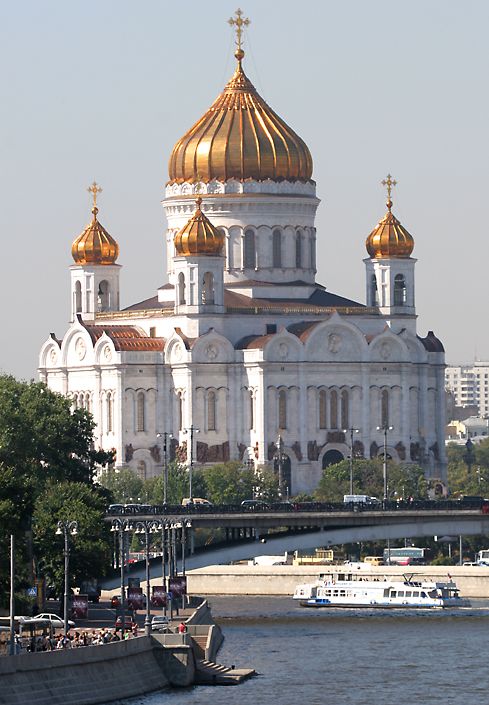
One church building which didn't survive Stalin was the Cathedral of Christ the Saviour built from 1839 to 1883 to commemorate the defeat of Napoleon. Originally envisioned by Tsar Alexander I, its design was redone and a new location set aside by his brother and successor, Nicholas, before being consecrated on the day Alexander III was crowned. A year before that, Tchaikovsky's famous "1812 Overture" debuted in the cathedral. Stalin decided that he wanted the site for a 315 meter high Palace of the Soviets, with a 100 meter high statue of Lenin outside. In 1931 Stalin had the cathedral demolished, but the Palace of the Soviets was never built and instead the location was used for the largest swimming pool in the world. Come 1995 and Moscow's go-getting mayor Yury Luzhkov started work on a replacement Cathedral of Christ the Saviour, completing it in only two years, but at a cost of US$350 million. Church building and restoration is certainly a boom industry in Russia, I saw work being done in all the places I visited. Ordinary Russians seem to have welcomed orthodox beliefs back into their lives, and the orthodox church is once again a major part of Russian national identity. |
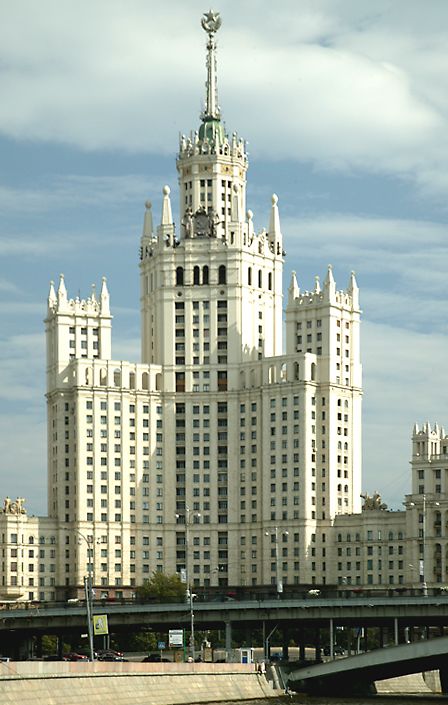
It's worth doing a boat trip along the Moscow river, but be warned that the concept of a round trip doesn't exist here. On the mistaken assumption that I could go down the river and back again on the same ticket, I ended up spending a ridiculous amount of money to go just three stops. The best thing to do is to take the subway to one of the end points, such as Novospassky Most boat landing, and then take the boat to the other end point. One building you'll see near Novospassky Most is the Kotelnicheskaya apartment block, one of Stalin's "Seven Sisters", a group of seven skyscrapers built in the 1950s in an odd mixture of styles which were supposed to impress the world with the splendour of Russia's progress and architectural achievements under communist rule. Instead the Seven Sisters seem more like a monument to the inferiority complex Russia felt towards America's skyscrapers. |
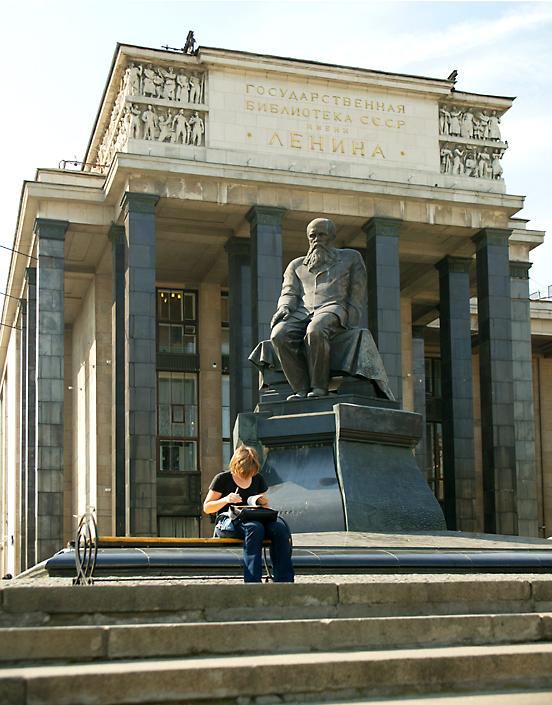
The Lenin Library is another communist monument, and only a short walk from the main entrance to the Kremlin. Its squat Soviet Realistic exterior didn't induce me to go inside, but I took a photo anyway since it's right next to the subway station I used whenever I visited Red Square and the Kremlin. I'm not too knowledgeable about Russian communists, but even I knew that the statue isn't of Lenin - it turns out that it's the Russian writer Dostoyevsky. |
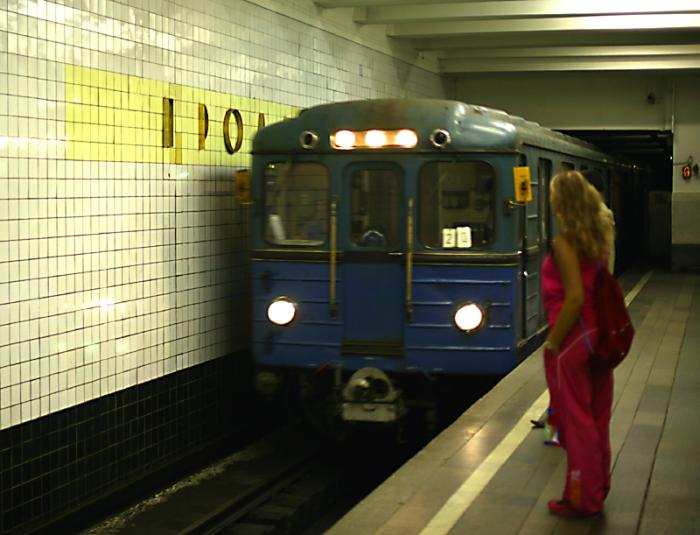
The subway is certainly the best way to get around, and is fairly easy to navigate even if you don't have much in the way of Russian language skills. It's fairly clean, trains are very frequent and they can take you anywhere you'd want to go in this large city. After getting his start in the mines of the Ukraine, the man who became Premier Khruschev was assigned to oversee the construction of the subway system, and by all accounts he did a very good job. The stations still carry their original names, this photo was taken in the "Proletariat station" and there are other stations named for the 1905 revolution, the barricades set up during the October revolution and Lubyanka, which is where the notorious and dreaded KGB prison was located. |
|
It's well worth using the subway to explore parts of Moscow beyond the central area. There are many large parks and historic estates which can be visited, as well as literary and other cultural sites. I was only in the country for about 10 days so I had to limit the number of places within Moscow I visited, because I wanted to go outside Moscow to the historic towns of the so-called "Golden Ring", and I had also set aside several days to photograph the 2005 MAKS airshow and to visit the Russian air force museum at Monino. One place within Moscow I was determined to visit was Novodevichy convent, which you see here. |
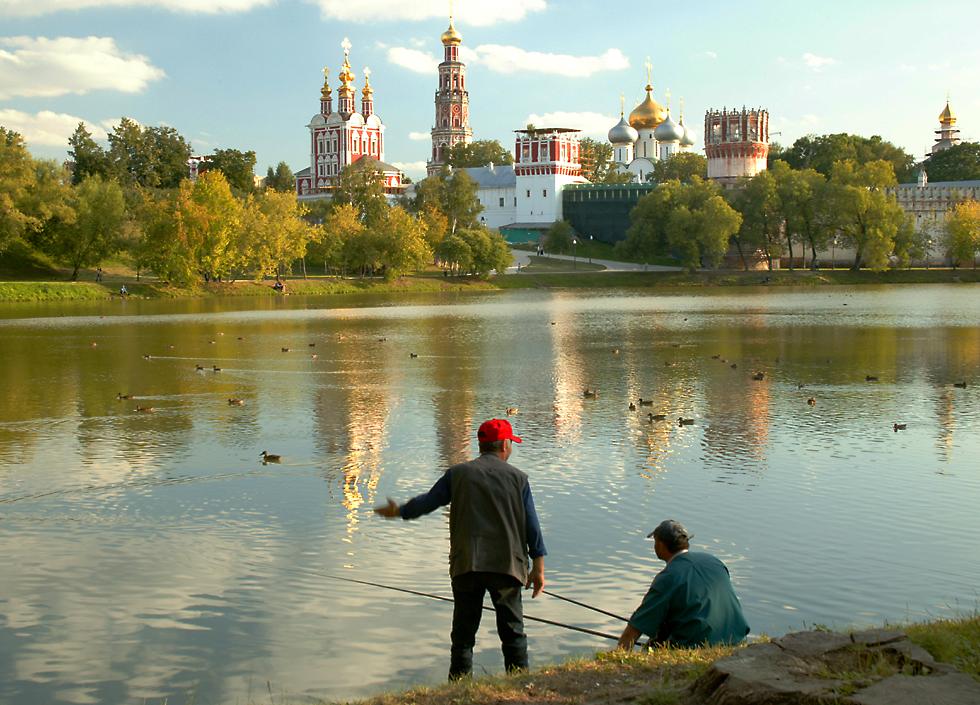 |
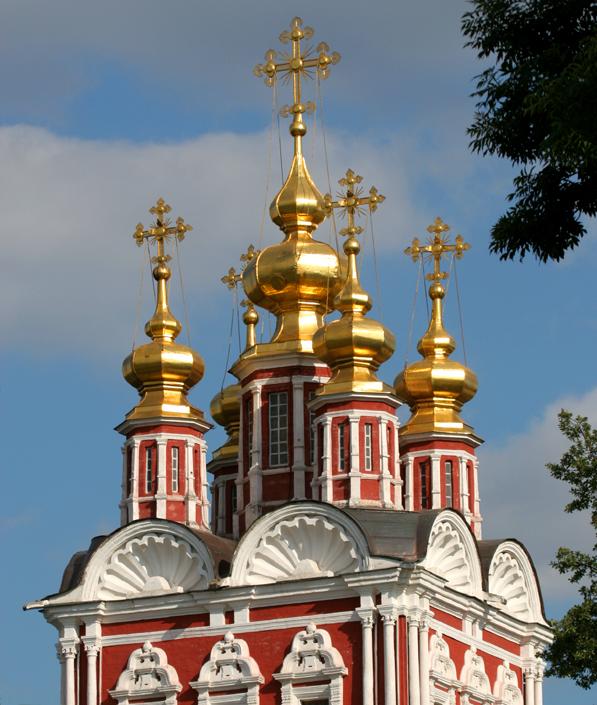
The convent was founded in 1524 to commemorate the recapture of the Russian town of Smolensk from the Lithuanians. As well as being a convent it was also intended as a fortress, which is why it has crenulated towers. It became a favoured place for noble women to seek a religious life, and was also used more or less as a prison for politically inconvenient women, such as Tsar Peter the Great's first wife, and also for his half-sister. It's association with nobility made the convent very wealthy, and it ended up owning a huge area of land, a large number of villages and about 14,500 serfs. With the church acting in this way it's not too surprising that communism was able to take root in Russia by proclaiming the "dictatorship of the proletariat", nor is it surprising that communism was so hostile towards religion. There are quite a few interesting buildings within the grounds of the convent, such as the Transfiguration Gate Church which you see here, built between 1687 and 1689. The church actually sits above the gate which it's named after. |
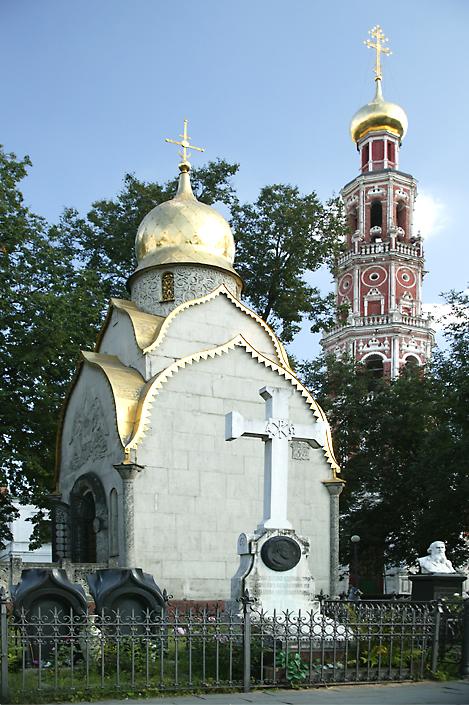
This unusual squat structure is the Prokhorov chapel. The bell tower which you can see behind it is widely considered to be the finest in all of Moscow. It is octagonal and has six tiers, and for a long time it was the second tallest structure in Moscow, after the Ivan the Great bell tower. As you can see there are quite a few tombs within the grounds of the convent, including Sofia and Peter the Great's wife. |
|
The bell tower again, this time with the Smolensk Cathedral which is said to be modelled after the Assumption Cathedral within the Kremlin. |
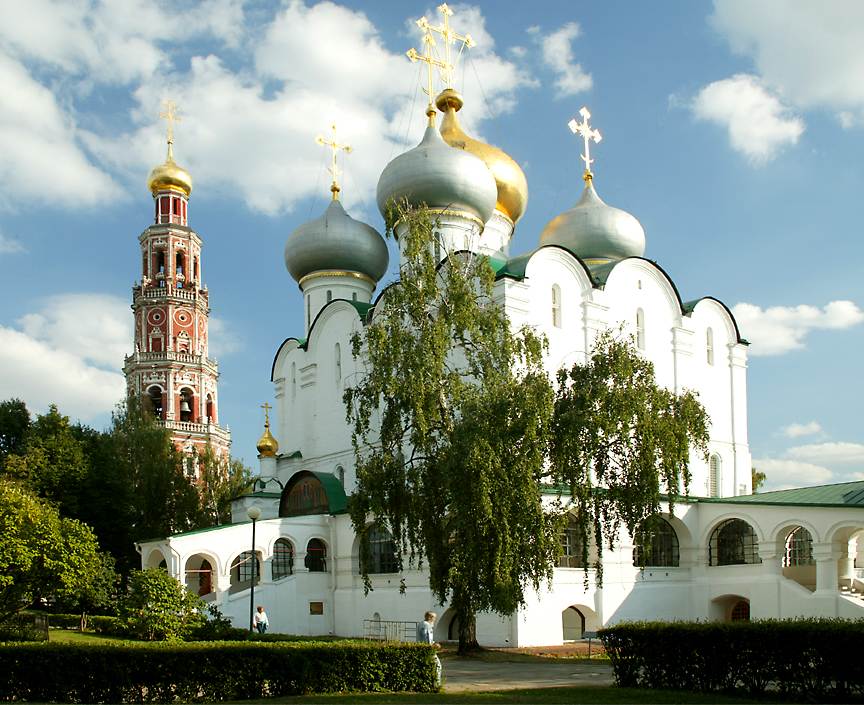
|
